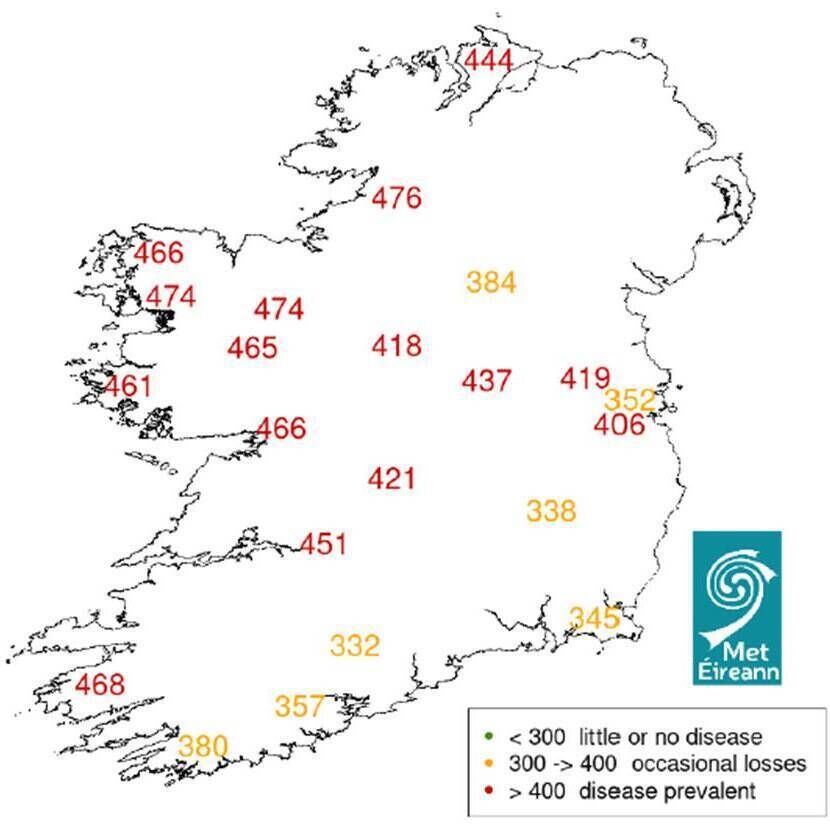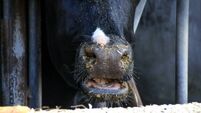Index forecasts greater liver fluke prevalence in the Midlands, west and north this month

In abattoir examinations, on average 34% of herds have at least one animal with liver fluke damage.
Liver fluke infection is predicted to be more prevalent in the Midlands, the west and northern areas of the country.
The Ollerenshaw Summer Index 2025 predicts lower infection rate in the southeast of the country due to dry conditions that occurred in June and September this year.

The Beef HealthCheck programme, run by Animal Health Ireland (AHI) in partnership with Meat Industry Ireland (MII) and meat factories nationwide, collects and reports liver fluke information of cattle at slaughter.
Although there was an increase in liver fluke levels in 2024 for the first time in years, 2025 has currently returned to previous levels. To date this year, abattoir examinations showed an average of 34% of herds with at least one animal with liver fluke damage.
Active infection in one or more animals was seen in 12% of herds, compared to 17% last year. Counties in the northwest of Ireland were more heavily affected, with 60-80% of herds in Sligo, Mayo, Leitrim, Roscommon, and Donegal reported to have signs of liver fluke at slaughter.
The prevalence within herds is typically low, depending on the farm, with 6% of animals presented to slaughter showing signs of liver fluke damage and 1.2% of animals showing live liver fluke parasites. It is important for farmers to know whether liver fluke is present on their farm and to treat accordingly to avoid production losses.
In order to assess the risk of liver fluke disease on any particular farm, various environmental factors, particularly climate, landform and soil type (especially whether soils are heavy or free-draining) must be taken into account.
This is because the intermediate host of the parasite, which is a mud snail, occurs in soil that is slightly acidic and muddy. Thus, areas with rushes or wet patches, like areas around gates or troughs, are particularly important for liver fluke risk as they can help to maintain a population of the infective stage of the parasite.
In addition, livestock owners should factor in prior liver fluke history on the farm, as this is an important indicator of future disease risks.
Liver fluke infection tends to be chronic in cattle, resulting in ill-thrift and poor performance. Though chronic disease can also occur in sheep, infections may also result in more acute clinical signs and sudden death in cases of heavy challenge.
Livestock owners should be vigilant for any signs of illness or ill-thrift in their animals and consult with their private veterinary practitioner (PVP) if they are concerned.
In areas of high risk and on farms where liver fluke infection has been diagnosed or where there is a prior history, livestock owners should consult with their PVP to devise an appropriate control programme.
When using flukicides to control and treat liver fluke infection, particular attention should be given to dosing cattle at the time of housing or shortly thereafter, and sheep in autumn or earlier in the year, where indicated by faecal examination results or prior disease history.
Testing faecal samples for the presence of liver fluke eggs can help determine both the need for and the success of flukicide treatments. This is especially important given that resistance to flukicides is becoming increasingly widespread.
Rumen fluke has become more prevalent in Ireland in recent years in both cattle and sheep.
Rumen fluke infection is extremely common, particularly in cattle, but only rarely results in disease.
If clinical signs such as rapid weight loss or diarrhoea are seen, or if there is a history of previous disease from rumen fluke on the farm, livestock owners should consult with their PVP as to whether treatment for rumen fluke is required.
Farmers should be aware that the presence of rumen fluke eggs in faecal samples of animals that are thriving and producing well does not indicate that treatment for rumen fluke is needed.













